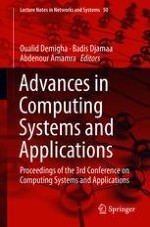This book gathers selected papers presented at the 3rd Conference on Computing Systems and Applications (CSA’2018), held at the Ecole Militaire Polytechnique, Algiers, Algeria on April 24–25, 2018. The CSA’2018 constitutes a leading forum for exchanging, discussing and leveraging modern computer systems technology in such varied fields as: data science, computer networks and security, information systems and software engineering, and computer vision. The contributions presented here will help promote and advance the adoption of computer science technologies in industrial, entertainment, social, and everyday applications. Though primarily intended for students, researchers, engineers and practitioners working in the field, it will also benefit a wider audience interested in the latest developments in the computer sciences.
